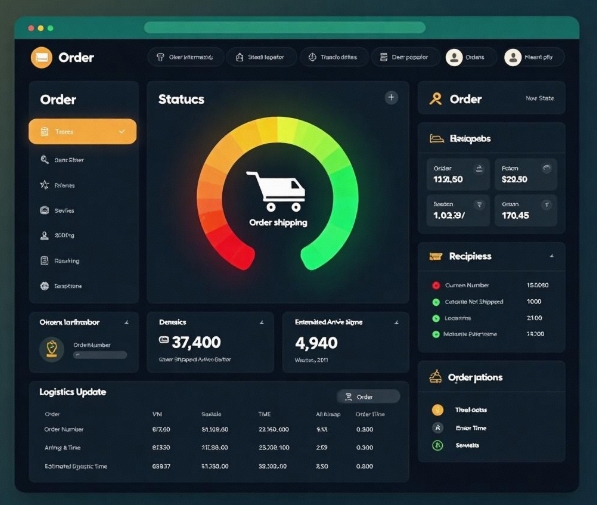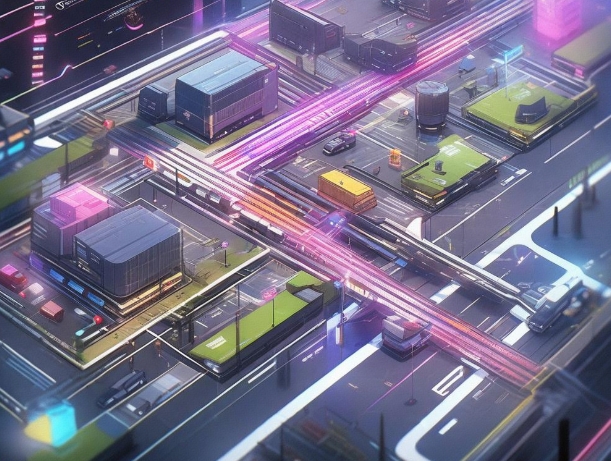How to Implement Order Tracking and Customer Service System for an E-commerce Platform
- latest articles
- 1.DApp Development & Customization: Merging Diverse Market Needs with User Experience 2.Analysis of the Core Technical System in DApp Project Development 3.How to achieve cross-chain interoperability in Web3 projects? 4.How does the tokenization of points reconstruct the e-commerce ecosystem? 5.How to Set and Track Data Metrics for a Points Mall? 6.What is DApp Development? Core Concepts and Technical Analysis 7.Inventory of commonly used Web3 development tools and usage tips 8.Development of a Distribution System Integrated with Social E-commerce 9.Six Key Steps for Businesses to Build a Points Mall System 10.What is DApp Development? A Comprehensive Guide from Concept to Implementation
- Popular Articles
- 1.Future Trends and Technology Predictions for APP Development in 2025 2.Analysis of the DeFi Ecosystem: How Developers Can Participate in Decentralized Finance Innovation 3.From Zero to One: How PI Mall Revolutionizes the Traditional E-commerce Model 4.DAPP Development | Best Practices for Professional Customization and Rapid Launch 5.Recommended by the Web3 developer community: the most noteworthy forums and resources 6.From Cloud Computing to Computing Power Leasing: Building a Flexible and Scalable Computing Resource Platform 7.How to Develop a Successful Douyin Mini Program: Technical Architecture and Best Practices 8.Shared Bike System APP: The Convenient Choice in the Era of Smart Travel 9.How to Create a Successful Dating App: From Needs Analysis to User Experience Design 10.From Design to Development: The Complete Process of Bringing an APP Idea to Life
With the rapid development of e-commerce, online stores have become the primary shopping channel for an increasing number of consumers. To enhance user experience, build consumer trust, and optimize merchant operations, the implementation of an order tracking and customer service system is particularly important. This article will delve into how to implement an order tracking and customer service system for an online store, combining key technical and procedural aspects to help merchants build an efficient, intelligent service system that effectively meets customer needs.
I. The Necessity of an Online Store Order Tracking System
An order tracking system, as the name implies, is used to track the entire process of a consumer's order in real-time, from order creation to shipping, delivery, and receipt. It clearly displays the current status of the order, making it easy for consumers, merchants, and logistics companies to stay informed about the order's progress at any time.
1. Improving Customer Satisfaction
When customers can check the delivery status of their orders in real-time after placing an order, it undoubtedly greatly enhances their satisfaction. Especially during holidays or promotional periods when order volumes surge, customers pay more attention to logistics progress. Providing transparent order tracking information helps reduce customer anxiety.
2. Optimizing Merchant Operations
Through the order tracking system, merchants can improve efficiency in order processing, shipping, and delivery, reducing customer complaints. For example, the system can automatically notify merchants of orders that have not been shipped on time or orders experiencing anomalies during transit, allowing merchants to take timely action to avoid delays or delivery errors.
3. Reducing Operational Costs
The order tracking system also helps merchants monitor order status in real-time, analyze delivery efficiency, and optimize logistics resource allocation. Additionally, through automated processing, merchants can reduce the workload of manual inquiries and follow-ups, thereby saving labor costs.
II. Functional Modules of an Online Store Order Tracking System
A comprehensive order tracking system should include the following basic functional modules:
1. Order Status Tracking Module
This is the core module of the order tracking system. It needs to record and display every progress of the order in real-time, including:
Order Creation: The customer completes the order, and the system records the order information.
Payment Success: After the customer completes the payment, the system marks the payment as successful.
Shipping and Logistics Updates: After the merchant ships the order, the system integrates with the logistics company's interface to update the delivery status in real-time.
Receipt Confirmation: After the customer receives and signs for the product, the system automatically updates the order status to "Completed."
2. Customer Service Support Module
The customer service module typically serves as an entry point to help customers resolve issues. It works closely with the order tracking system to address various problems customers encounter during the tracking process.
Automated Response System: Set up automated responses for common questions (such as shipping progress, return and exchange processes) to improve service efficiency.
Human Agent Access: When customers encounter complex or special issues, they can easily and quickly connect with a human agent for real-time assistance.
FAQ Database: Provide an FAQ feature to help customers quickly find answers, reducing the workload on customer service.
3. Notification and Reminder Module
Send relevant notifications to customers, merchants, and logistics companies promptly via SMS, email, or app push notifications.
Shipping Notification: When the merchant ships the order, the system notifies the customer via SMS or app push.
Logistics Update Notification: Notify customers promptly when the order's delivery status changes, ensuring they stay informed about the order's progress.
Order Anomaly Notification: When the system detects anomalies during order processing (such as logistics delays, delivery errors), it notifies the merchant promptly and updates the customer on the anomaly resolution progress.
4. Data Analysis and Reporting Module
By analyzing order data, merchants can identify potential issues and make improvements. The order tracking system can also generate detailed reports to help merchants monitor overall business performance and provide data support for future operational decisions.
III. How to Implement an Online Store's Order Tracking and Customer Service System
Implementing a complete order tracking and customer service system requires cross-departmental collaboration and advanced technical support. Here are some implementation suggestions:
1. Choose the Appropriate Technical Architecture
To build an efficient order tracking and customer service system, the first step is to select the right technical architecture. Typically, a microservices or distributed architecture can be adopted to ensure high availability and scalability. This way, whether it's order generation, payment processing, logistics tracking, or customer support, each component can operate independently and efficiently, facilitating future system expansion.
2. Integrate with Logistics Company Systems
To achieve real-time order status updates, the store's order tracking system needs to integrate with logistics company systems. Through API interfaces, the store system can obtain delivery status information from logistics companies, ensuring customers are informed about their order status promptly. Currently, most logistics companies (such as SF Express, Cainiao, etc.) offer rich API interfaces for easy system integration by merchants.
3. Optimize Customer Service Experience
Beyond order tracking functionality, the speed and quality of customer service responses directly impact customer satisfaction. During system development, AI-powered customer service assistants can be introduced, utilizing natural language processing technology for intelligent responses. At the same time, designing a simple interface and smooth operational flow ensures customers can easily find the help they need and resolve issues promptly.
4. Data Analysis and Intelligent Optimization
By analyzing large volumes of order data, the store can identify potential issues and optimize business processes. For example, if the system detects frequent delays with a particular logistics company, the merchant can adjust the partnership and choose a more reliable logistics provider. Additionally, data analysis can predict order volume changes during peak seasons, allowing for proactive resource preparation to ensure system stability and service quality.
IV. Case Study: An E-commerce Platform's Order Tracking and Customer Service System
Taking a well-known e-commerce platform as an example, this platform has implemented a comprehensive order tracking and customer service system in its store. After placing an order, customers can check the delivery status in real-time via the app or website. Throughout the delivery process, the system automatically pushes logistics updates, allowing customers to stay informed about their order's progress. Furthermore, the platform offers 24/7 online customer service; if customers encounter issues, they can directly contact support via online chat or phone.
To enhance the customer experience, the platform also employs an intelligent customer service chatbot that can automatically handle common inquiries, such as order queries and return/exchange processes, significantly improving response efficiency. Meanwhile, the backend system uses data analysis to automatically identify order anomalies and promptly notify merchants to intervene, ensuring every customer's order is completed smoothly.
V. Summary
The order tracking and customer service system of an online store is a crucial tool for enhancing user experience, optimizing merchant operations, and reducing costs. Through appropriate technology selection and system design, merchants can achieve efficient order management and high-quality customer service, thereby increasing customer satisfaction and strengthening market competitiveness. For e-commerce platforms, continuously optimizing the order tracking and customer service system, leveraging data analysis and AI technology, can further enhance business intelligence and automation levels, creating a more comprehensive user experience.
As technology continues to advance, online store order tracking and customer service systems will also innovate, with the potential to integrate more intelligent services in the future, further improving customer experience and merchant operational efficiency.
-

How does the tokenization of points reconstruct the e-commerce ecosystem?
With the continuous advancement of internet technology and the gradual prolifera···
-

How to Set and Track Data Metrics for a Points Mall?
With the rapid development of the e-commerce industry, points malls, as a common···
-

Development of a Distribution System Integrated with Social E-commerce
With the rapid development of internet technology, the e-commerce industry has e···

 Blockchain
Blockchain












